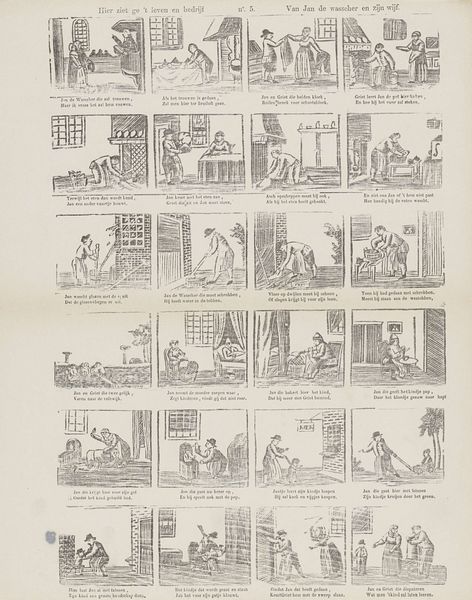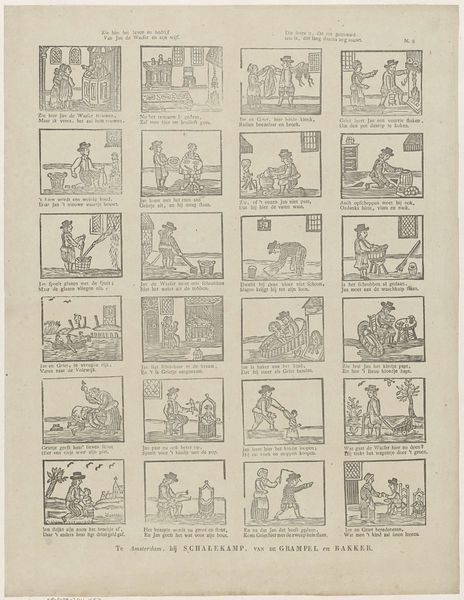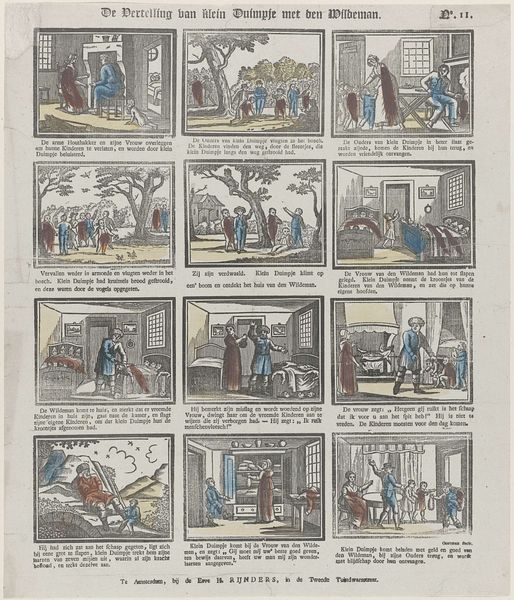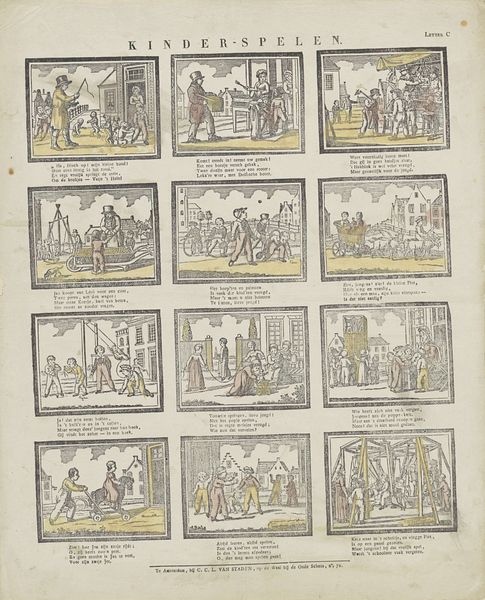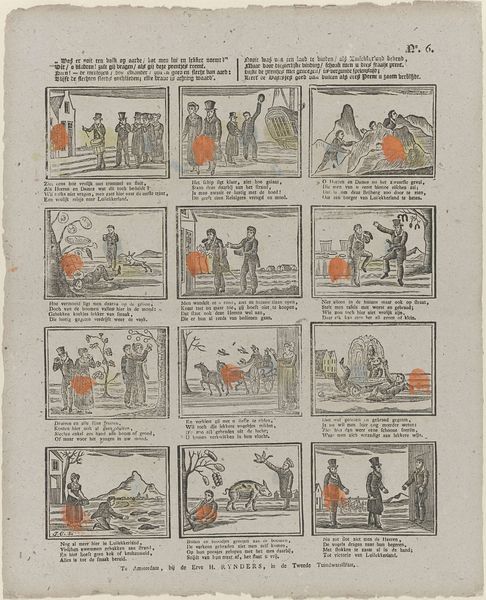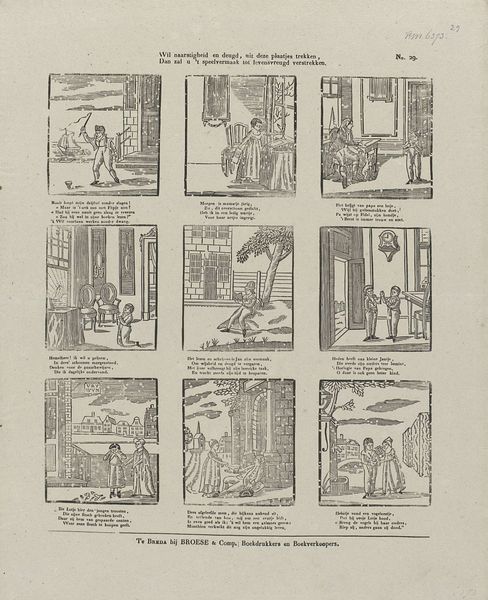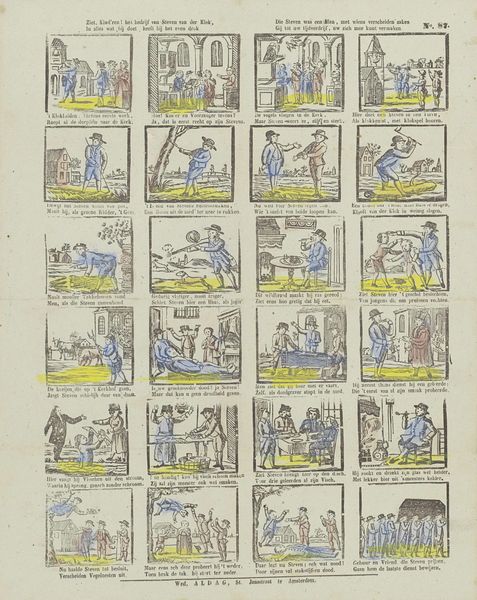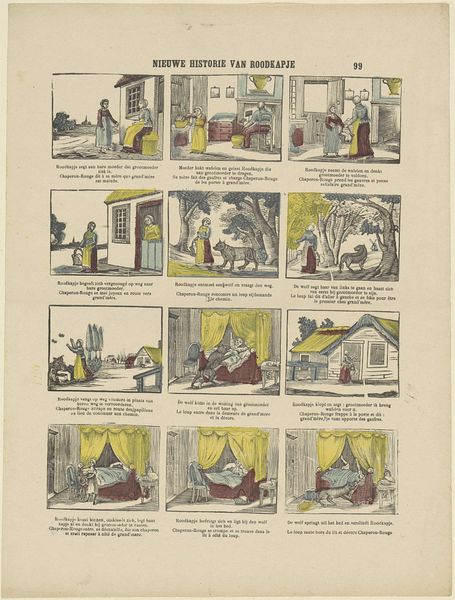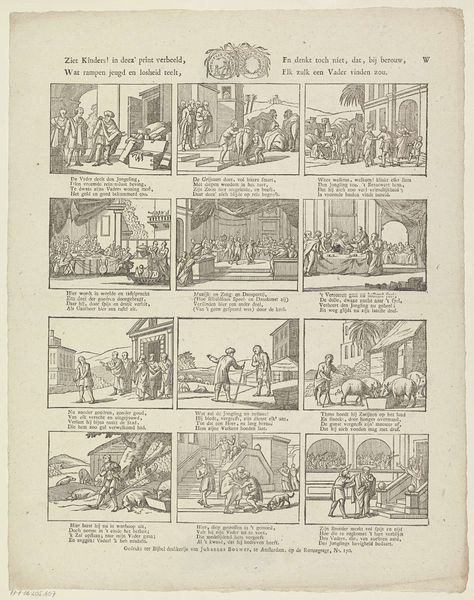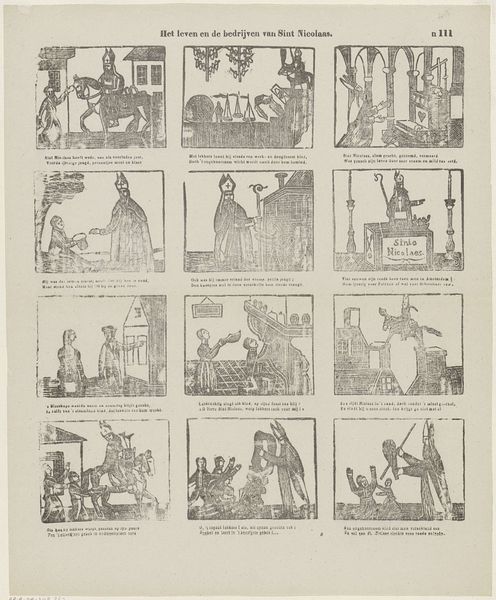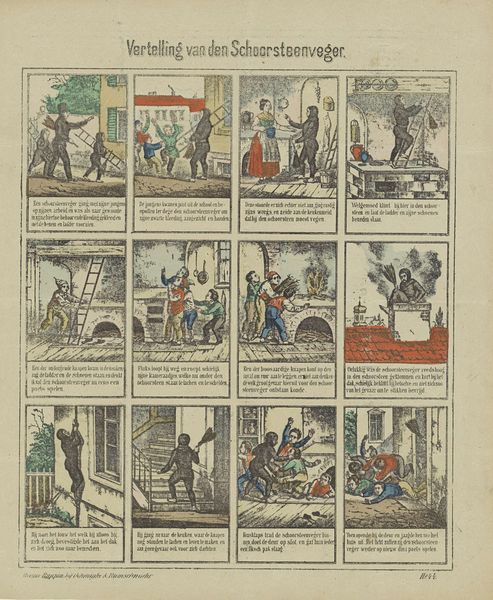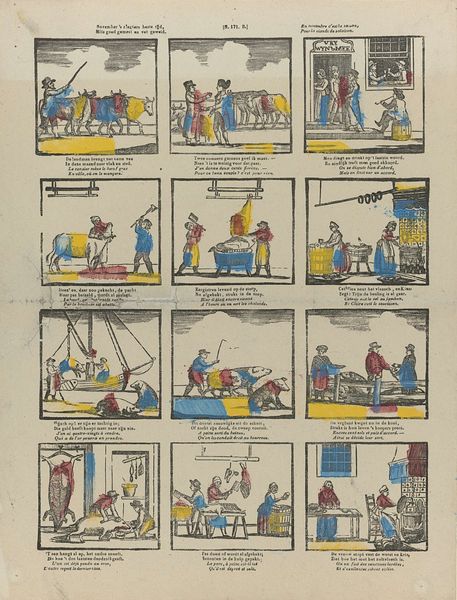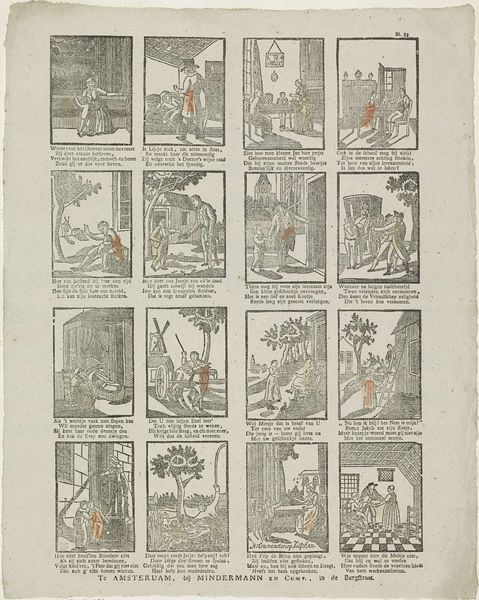
print, engraving
#
comic strip sketch
#
16_19th-century
#
narrative-art
#
comic strip
# print
#
old engraving style
#
sketch book
#
personal sketchbook
#
idea generation sketch
#
sketchwork
#
comic
#
sketchbook drawing
#
genre-painting
#
storyboard and sketchbook work
#
sketchbook art
#
engraving
Dimensions: height 424 mm, width 341 mm
Copyright: Rijks Museum: Open Domain
Curator: Slagtijd, or "Slaughter Time," an engraving dating from between 1828 and 1853, offers a rather graphic depiction of… well, exactly what the title suggests. What's your first impression of it? Editor: It’s presented like a comic strip, almost. Morbid, sure, but the compartmentalized scenes make it feel… distant, I guess? Almost like a procedural. How do you interpret this work? Curator: It's fascinating, isn't it? Considering the socio-political context, these images weren’t necessarily intended as entertainment in the modern sense. We need to consider who the intended audience was. Who were they, and what messages might resonate within their daily lives? The focus is very much on commerce and industry, here, do you see how it reinforces established hierarchies, gender roles, access to food. It is a rather frank depiction, but I think the intended audience had far different expectations when seeing a drawing like this, from daily life. How does this sequence of events reinforce economic or power imbalances that would have been obvious to the original viewer? Editor: You’re right, the focus on the ‘everyday’ aspect is very striking. The gendered division of labour jumps out now. The men are butchering and selling and so forth; the women seem more rooted in food preparation, at least what’s been preserved in the frame here. I suppose I had not initially realized how this imagery entrenches different levels of labour! Curator: Exactly! It normalises certain roles. Think of this within a wider context of Dutch trade and industry. The slaughter of animals, commodification, these all speak volumes about how humans interact with the environment and animals specifically within this economy. What responsibilities did this society claim? Editor: I suppose the panels that demonstrate an intersection between life, death, family structure and industry give modern viewers an occasion to ask whether and what these societies value about people. It invites you to analyze all that might be rendered invisible through daily custom. Curator: Precisely. Hopefully, our discussion reveals layers to Slagtijd beyond mere depictions. Thanks to the art!
Comments
No comments
Be the first to comment and join the conversation on the ultimate creative platform.

